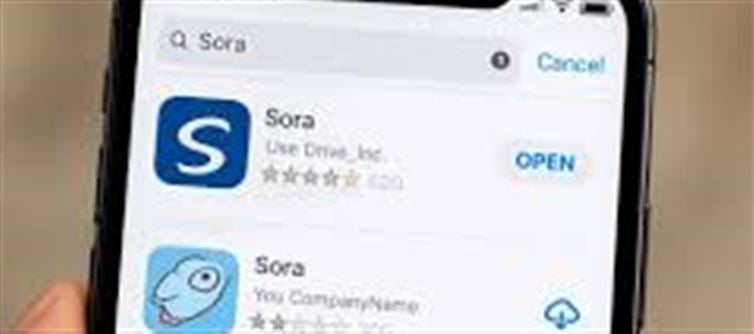
The Sora App has been surrounded by multiple controversies and user complaints, raising concerns about its authenticity. Users who have downloaded the app recently are advised to stay alert as there are increasing reports of in-app mishaps and security issues. Fake or malicious apps can often impersonate legitimate services to steal personal data, cause financial harm, or disrupt your device's functionality.
If you’ve downloaded the Sora app and are unsure about its legitimacy, here are some steps to check and protect yourself:
How to Identify a Fake Sora App
1. Check the Developer’s Details:
o Legitimate Developer: Ensure the app is developed by a well-known and reputable company or developer. Go to the Google Play Store or Apple App Store, and check the developer's name.
o Red Flag: If the developer's name seems random, generic, or the app is published by an unknown developer, it could be a fake or suspicious app.
2. App Reviews and Ratings:
o Genuine Reviews: Look for authentic user reviews. Fake apps often have inflated or overly positive reviews that are sometimes written by bots. If the app has overwhelmingly positive reviews with no critical feedback, this could be a red flag.
o Examine User Feedback: Look for patterns of complaints in the reviews, such as frequent crashes, slow performance, or suspicious activity related to privacy.
3. Permissions Requested:
o Excessive Permissions: A legitimate app only asks for necessary permissions (e.g., camera access for photo apps, location for navigation). If the app requests permissions that seem irrelevant to its purpose (like access to your contacts, microphone, or SMS), it could be trying to steal personal data.
o Check Permissions: Go to your device’s Settings > Apps > Sora App and review the permissions it has requested. If they seem suspicious, consider uninstalling the app immediately.
4. Check for Updates and Support:
o Legitimate Apps: Authentic apps often provide regular updates to improve security and functionality. search for updates on the app store and see if there are recent patches.
o Fake Apps: Fake apps may not have updates, and their support systems (like contact details or customer service) might be missing or difficult to reach.
5. Verify the Official Website:
o Official Information: Check if the app links to an official website with proper details about its functionality and support channels. A legitimate app usually has a professional website with security protocols like HTTPS.
o Fake Websites: Be cautious if the app redirects you to a poorly designed or unofficial-looking website. Scammers may create fake websites to capture your information.
6. Check for Security Threats:
o Antivirus Scan: Use an antivirus or security app to scan the Sora app for malware or security risks. Apps like McAfee, Norton, or Kaspersky can help identify potential threats and ensure your device is secure.
Steps to Protect Yourself If You’ve Downloaded a Fake App
1. Uninstall the App Immediately: If you suspect the app is fake or malicious, uninstall it immediately to prevent any potential damage.
2. Change Your Passwords: If you’ve provided any sensitive information such as login credentials, financial details, or personal identification, it’s best to change your passwords for your accounts.
3. Monitor Financial Transactions: If the app has requested access to payment methods or banking details, monitor your bank statements and payment accounts for any suspicious transactions.
4. Enable Two-Factor Authentication (2FA): For an extra layer of security, enable 2FA on your important accounts, especially if you think your login information may have been compromised.
5. Report the App: If you’ve identified a fake app, report it to the Google Play Store or Apple App Store so others can be warned.
Final Thoughts:
While the Sora app might seem useful or legitimate at first glance, user complaints and security concerns suggest you proceed with caution. Always download apps from trusted sources and be vigilant about the permissions you grant them.
Stay safe by checking the legitimacy of apps before installation, and if in doubt, avoid giving out personal or financial information.
Disclaimer:
The views and opinions expressed in this article are those of the author and do not necessarily reflect the official policy or position of any agency, organization, employer, or company. All information provided is for general informational purposes only. While every effort has been made to ensure accuracy, we make no representations or warranties of any kind, express or implied, about the completeness, reliability, or suitability of the information contained herein. Readers are advised to verify facts and seek professional advice where necessary. Any reliance placed on such information is strictly at the reader’s own risk..jpg)




 click and follow Indiaherald WhatsApp channel
click and follow Indiaherald WhatsApp channel